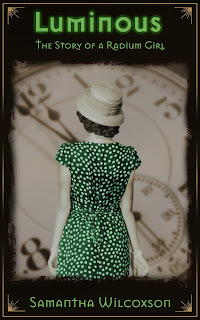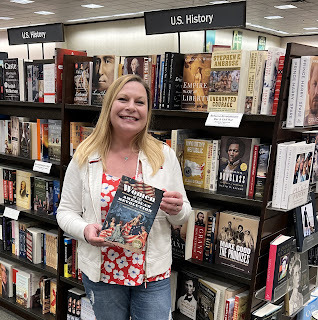Why I Write Historical Fiction - A Guest Entry from Samantha Wilcoxson
Samantha Wilcoxson writes emotive biographical fiction that enables readers to connect with history's unsung heroes. She also writes nonfiction for Pen & Sword History. Besides reading and writing, Samantha loves sharing trips to historic places with her family and spending time by the lake with a glass of wine. Her most recent work isBut One Life, a novelization of the life of American patriot Nathan Hale, and a new biography of James Alexander Hamilton is coming soon.
Wehave so much to learn from the past. In a society obsessed with the future andsupposed progress, it is tempting to dismiss those who have come before us and broughtus to where we are. Perhaps we believe we have moved beyond their lessons andold-fashioned ways, but I find evidence almost every day that we can benefitfrom deeper study.
WhenI select a historical figure to write about, my objective is to tell theirstory in a way that enables modern readers to connect with them as a well-knownfriend and abolish the distance between the now and then. I hope to inspirereaders to contemplate the values and character of the people in my storieswith the desire to take on some of those positive attributes themselves. Ofcourse, I encourage readers to appreciate the past and those who perseveredthrough circumstances that we cannot imagine coping with ourselves.
Historicalfigures also made mistakes, sometimes unbelievably profound ones, and we canlearn from those too. How can we expect to avoid the errors of the past if wedo not know about them? Will some of what we read make us uncomfortable? Icertainly hope so. When we think critically about decisions and actions of thepast, we should also look at our own the same way.
Peopleof the past share the universal human experience with us. We might thinkourselves quite different from them, but we hold in common the most substantialparts of life, such as love, family, and friendship. They endured tragedy andheartbreak, just as we sometimes do. Their perseverance often resulted in ourability to avoid hardships that they were forced to cope with.
CatherineDonohue is a beautiful example of this. She was an ordinary young woman wholoved her family and her church until her job at Radium Dial changedeverything. Catherine’s medical struggle with radium poisoning was horridenough, but she also insisted on taking up the legal battle with her employerto take responsibility for the sick and dying women they dismissed. A quiet,small-town girl became a heroic woman who can serve as an inspiration to usall, even as she lost her personal fight to survive. I alternated betweenwonder, sadness, and anger as I wrote her story in Luminous.
Womenlike Catherine are the reason I write historical fiction. I want people toremember her, connect with her, and feel inspired by her. Each of my novelsfeatures a person with a profound story to tell, one that I could not resist writing.
Mymost recent novel, But One Life, takes readers back to the AmericanRevolution and the life of a young man only vaguely remembered today. Did hereally say that he regretted he had but one life to give for his country beforebeing hanged as a spy by the British? Maybe, but what life journey had createda young man willing to make such a sacrifice? I wanted to know – and wanted myreaders to know – more about Nathan Hale and his short, tragic life.
Ihope my readers agree that I write historical fiction to share the emotions andexperiences of those who have gone before us. May their lives enrich our ownjust as our stories will hopefully one day encourage and inform those still tocome.

Find out more about Samatha Wilcoxson's books at: https://amazon.com/author/samanthawilcoxson




